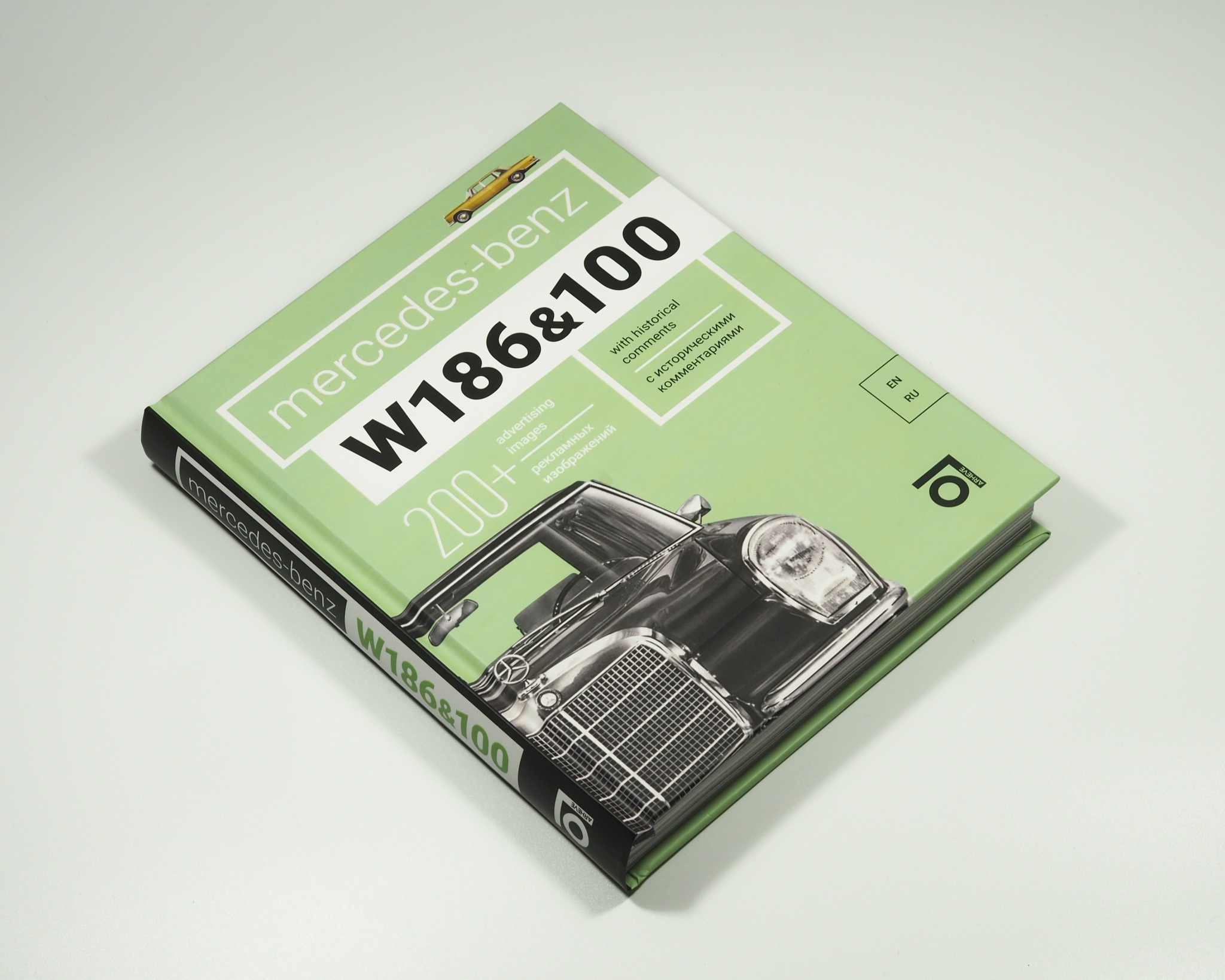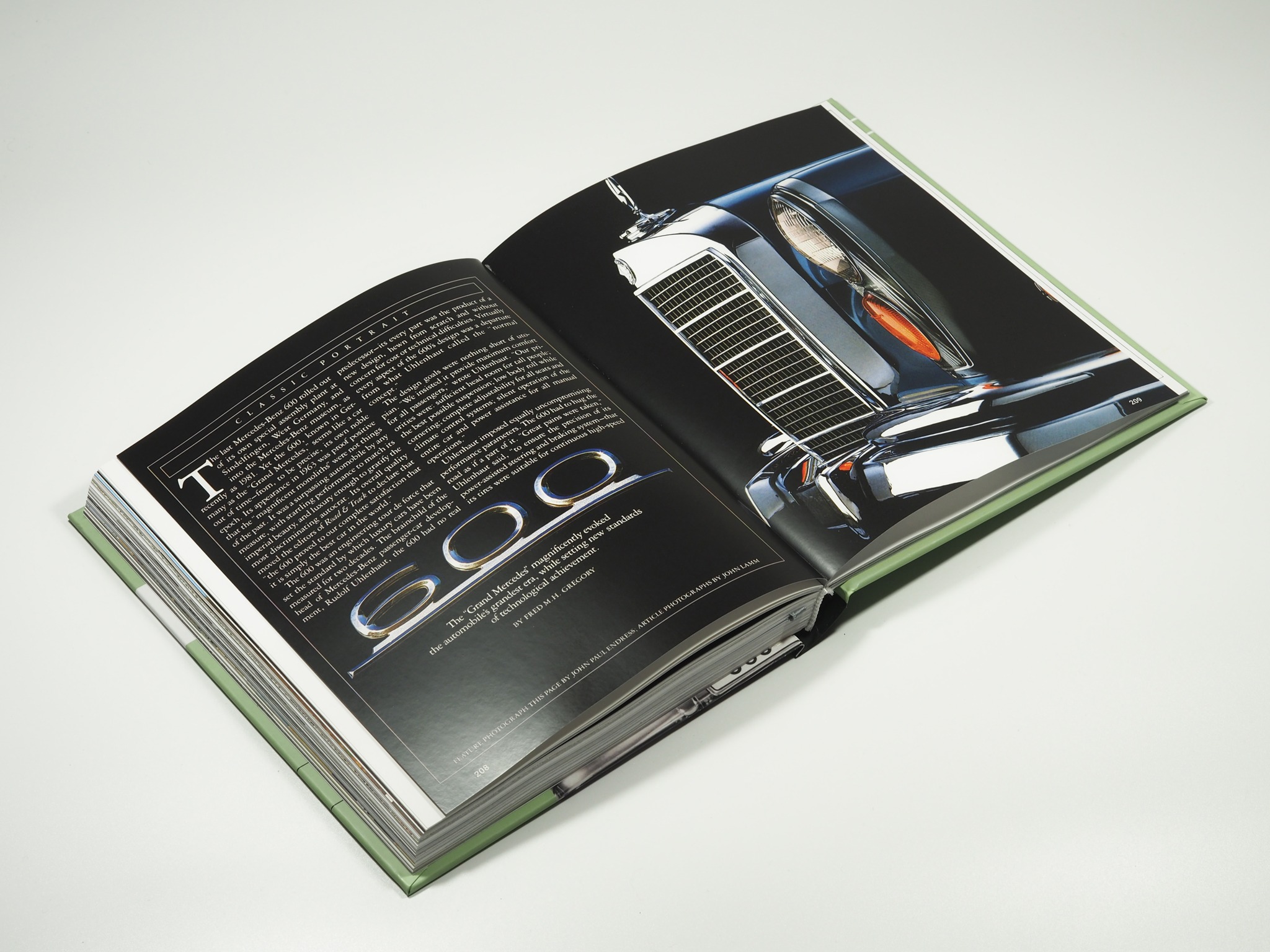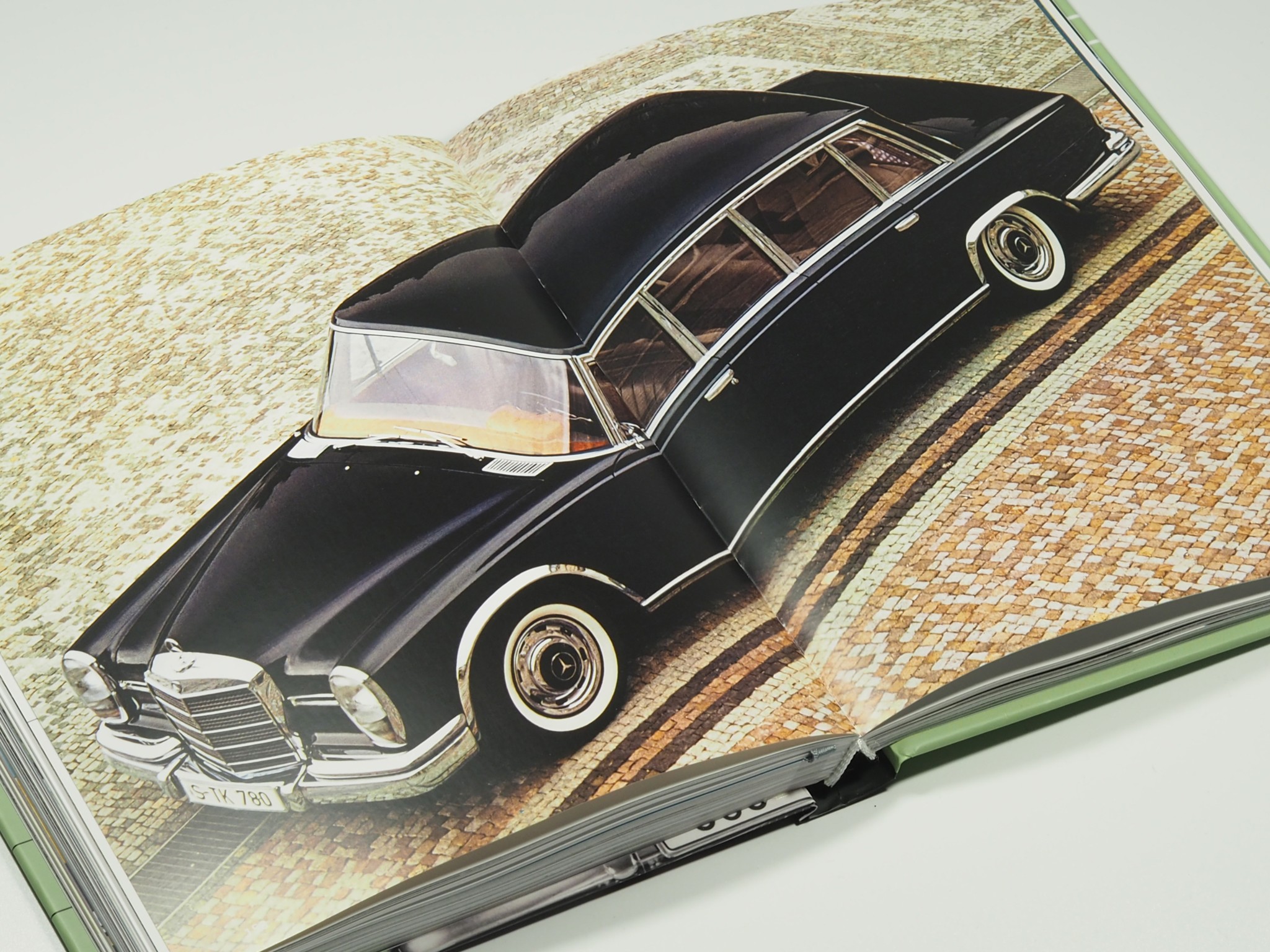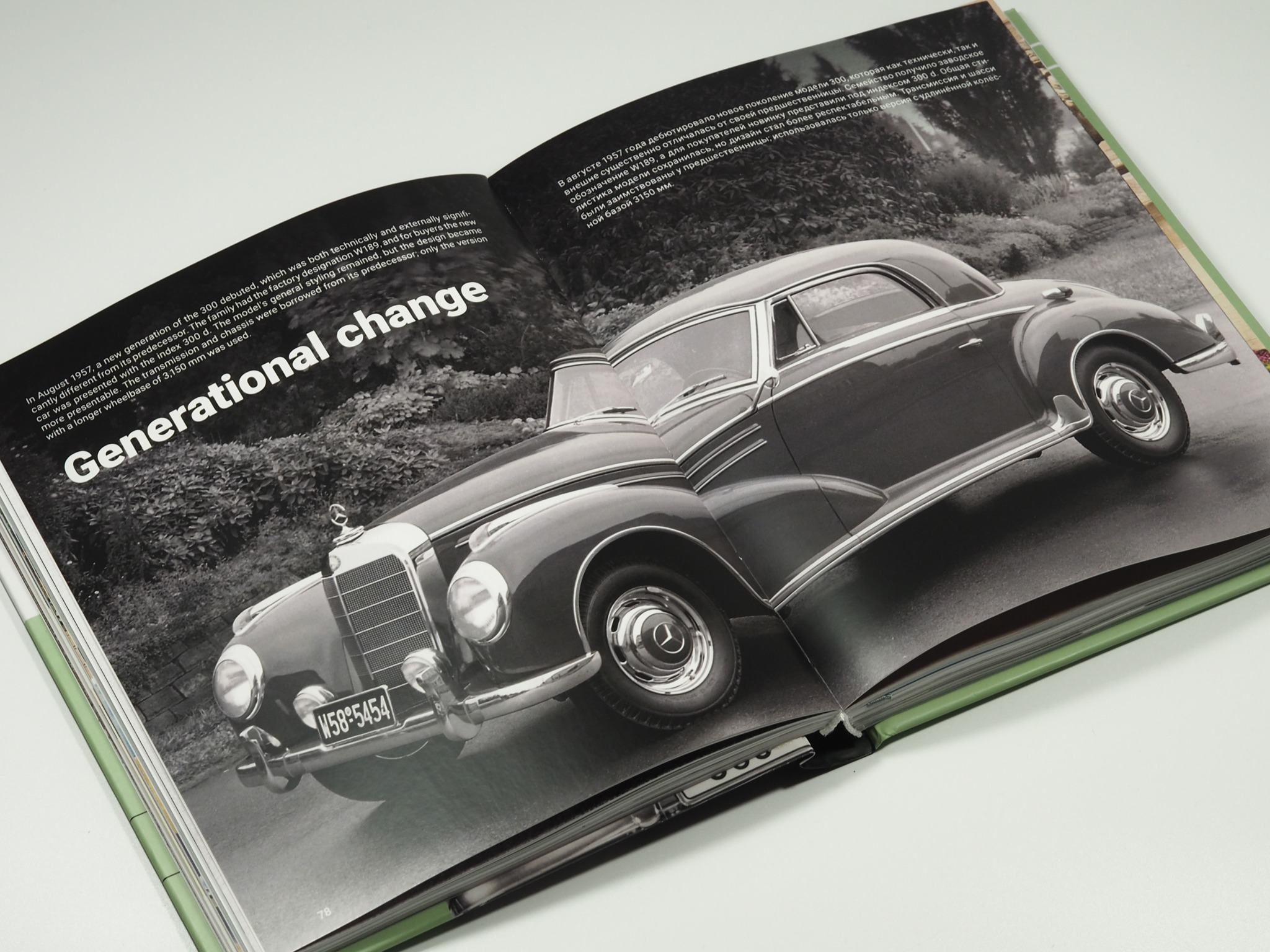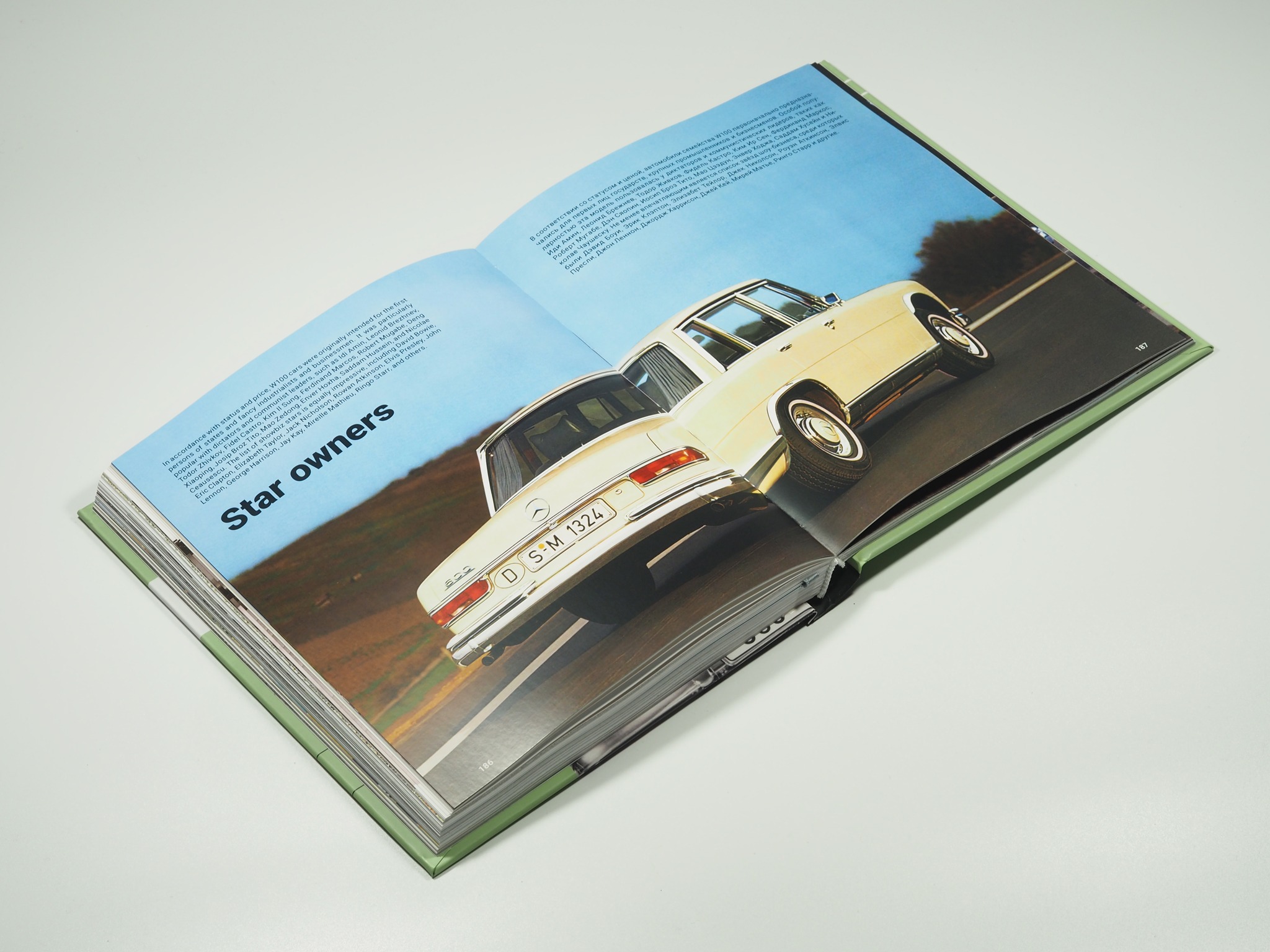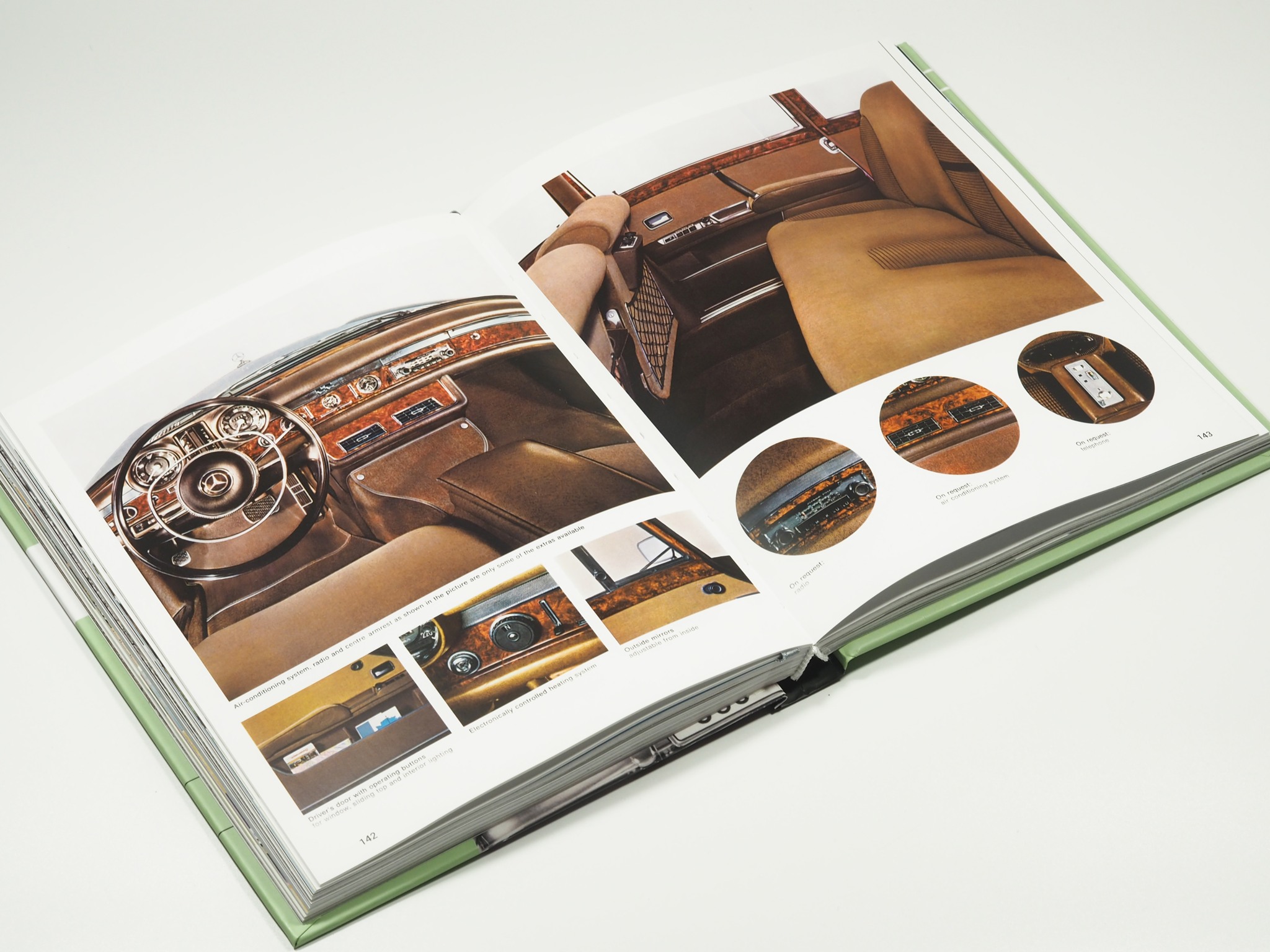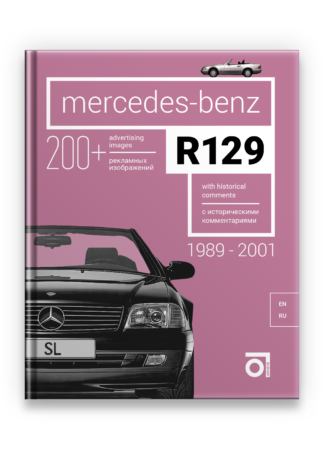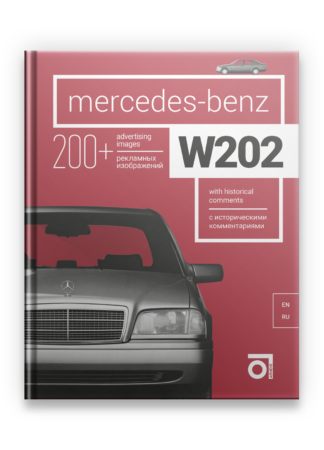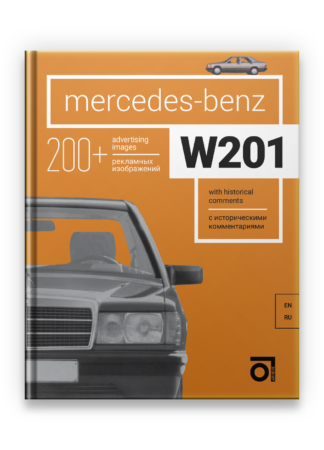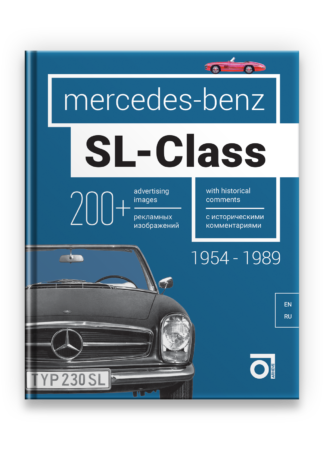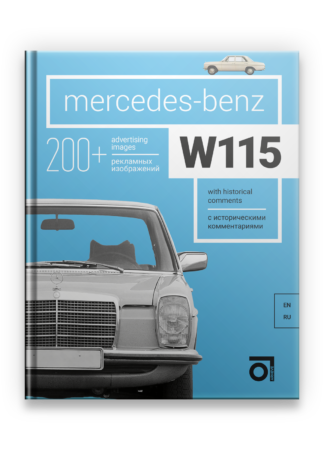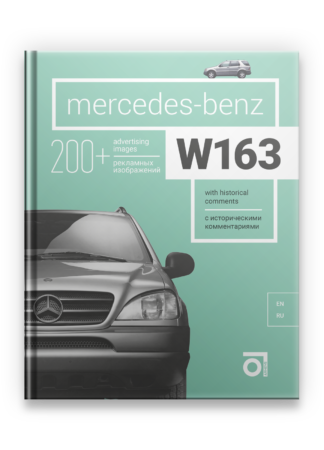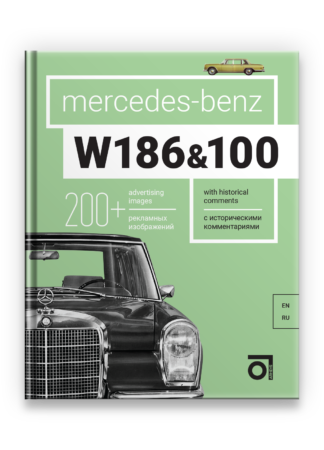Description
Mercedes-Benz W186-W100 Hardcover book (fragment of the text)
From the beginning of the 20th century until World War II, Daimler and Benz cars gained fame as solid and prestigious cars, and since 1926 they were united under the Mercedes-Benz brand.
These brands’ luxury limousines, convertibles, and landaulets could be seen in the garages of kings and emperors, wealthy businessmen and aristocrats, and the scientific and creative elite.
The pinnacle of engineering and technical thought of the Daimler-Benz Group in the late 1930s was the famous 770, also known as the Grosser Mercedes. However, the war and subsequent reconstruction of a destroyed Germany set other tasks for the concern’s management.
By the end of the war, most Daimler-Benz plants lay in ruins, and it took time to rebuild production. Naturally, then it was a question of organizing the production of the most inexpensive and unpretentious models of the late 1930s.
In May 1946, the first Mercedes-Benz 170 V (W136) chassis was assembled, and later production of light delivery vans, ambulances, and police cars began. In the summer of 1947, production of the 4-door W136 sedan family was revived.
Gradually, the German economy was getting back to normal, and by the early 1950s, Mercedes-Benz management decided to expand the product range and revitalize the line of prestige cars.
Thus, in April 1951 at the Frankfurt International Motor Show, the company presented a number of new products, including the flagship model Mercedes-Benz 300.
It was the largest and fastest German production car of the time, which could safely be called the successor of the pre-war Grosser Mercedes, although officially this name was never given to it.
Among the important people who used the new car were Chancellor Konrad Adenauer, President Theodor Heuss, Finance Minister Ludwig Erhard, leader of the Social Democratic Party Kurt Schumacher, and other representatives of the German establishment.
But a completely new page in the history of the brand’s luxury cars was opened by the Mercedes-Benz 600, which debuted in 1963. The huge sedan with a length of over 5.5 meters made a lasting impression.
Many innovations were used in its design, and in terms of comfort, this car became a benchmark for other automakers for many years.
Luxury sedans, limousines, and landaulets of the W100 family have taken their rightful place in the garages of royalty, politicians and businessmen, and movie and show business stars.
Like the cars in the 170 S family, the flagship Mercedes-Benz 300 (W186) was not an entirely new model. The design was based on the company’s pre-war developments. In particular, the design of the W186 family was based on elements of the 1940 Mercedes-Benz 260 prototype, which did not go into production due to the outbreak of war.
The car was powered by a 6-cylinder overhead camshaft engine. Initially, it had 115 hp and could accelerate the sedan to 160 km/h. Compared to the 170 S and 220 models, the flagship’s support structure and chassis were modernized in terms of size, weight, and performance. The most interesting feature of the Mercedes-Benz 300 was the electrically-actuated torsion bar suspension, which increased comfort and safety.
Read the continuation of Mercedes-Benz W186-W100 story in the book.
Other books about history of Mercedes:

